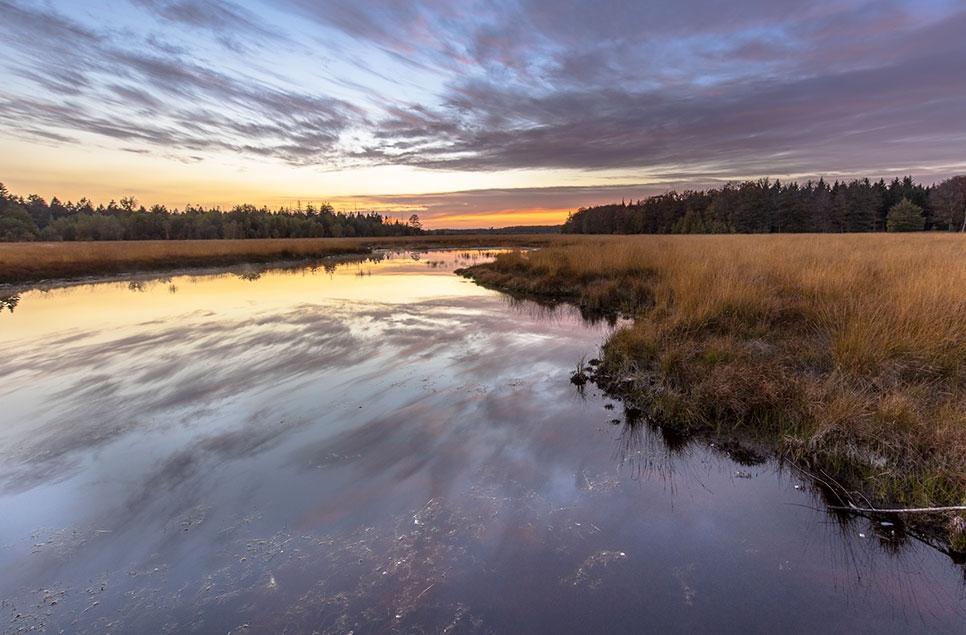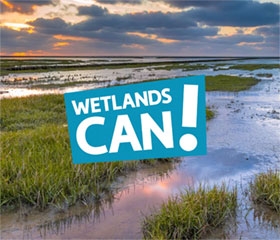What did COP15 do for wetlands?
WWT welcomes the adoption of an ambitious Global Biodiversity Framework that recognises the importance of wetlands.

WWT welcomes the adoption of an ambitious Global Biodiversity Framework that recognises the importance of wetlands.
What is COP15?
You may well have heard of COP26, held in Glasgow last year, or COP27, held last month in Egypt. These are the Conferences of the Parties to the United Nations Framework Convention on Climate Change – the so-called Climate COPs. However, other COPs are available and one that is particularly important for WWTs mission is the UN Biodiversity COP – the Conference of the Parties to the Convention on Biological Diversity (CBD), the 15th of which has recently concluded in Montreal, following two years of delays due to COVID-19.
CBD COPs take place every two years, but every decade a new strategic plan is developed and COP15 was one such juncture, where many were hoping a new ambitious Global Biodiversity Framework (GBF) would be agreed, building significantly on the commitments made in the Strategic Plan for Biodiversity 2011-2020, agreed in 2010. The good news for wetlands (and all nature) is that a significant agreement was reached in the early hours of 19th December.
The problems biodiversity faces
Following poor implementation of the Strategic Plan for Biodiversity and its Aichi Targets, the importance of an ambitious GBF cannot be overstated. Biodiversity and the habitats it forms and depends upon are being lost at an alarming rate. We have already lost almost 90% of our wetlands and they are still declining at a rate that is three times that of forests. About 40% of the world’s plant and animal species depend on wetlands, yet globally monitored freshwater populations have declined by 83%, twice the rate of terrestrial and marine populations.
As a result, the next decade is widely recognised as humanity’s last chance to reverse the ongoing losses, build a healthier relationship with nature and achieve the UN 2050 vision of ‘living in harmony with nature’1. As UN Secretary-General Antonio Guterres said in his opening speech at COP15, “No excuses, no delays; promises made must be promises kept”.
Promises of hope
So what promises were made and what will the GBF do to support wetland conservation, restoration and sustainable use in the years ahead?
Among the most important was the commitment to “halt and reverse biodiversity loss”, set out in the mission to 2030. There is also recognition that this should be “urgent and transformative” and involve “all of society”. The GBF thus sets out a framework for how societies’ relationship with nature needs to change, not just for nature but for people too. We all have a part to play and we all have something to gain by doing so.
To quote Guterres again, “Nature is humanity’s best friend – without nature we have nothing, without nature we are nothing”.
There are also quantitative targets for the first time and wetlands finally received the recognition they deserve. They are now specifically mentioned alongside other major habitats, such as forests and oceans, in important targets on habitat protection and restoration, following successful advocacy2 by WWT and our partners.
Target 2 requires all Parties to “Ensure that by 2030 at least 30 per cent of areas of degraded terrestrial, inland water, and coastal and marine ecosystems are under effective restoration…”. This is a key target for a global wetland recovery, as restoring degraded and lost wetlands puts much needed healthy wetlands back into the landscape. Land use change remains the number one threat to wetlands globally. Through the World Wetland Network we will be pushing for ambitious national wetland restoration plans to be developed and delivered.
And Target 3 requires Parties to “Ensure and enable that by 2030 at least 30 per cent of terrestrial, inland water, and of coastal and marine areas … are effectively conserved and managed…”. This is also crucial as we must continue to look after our remaining wetlands.
Other targets that can benefit wetlands address the need to:
- reduce nutrient pollution and the risk from pesticides by at least half
- halt human-induced extinctions
- reduce the rates of introduction of invasive alien species by at least half
- ensure agriculture is sustainable and harmful subsidies are eliminated (the majority of which are agricultural)
- ensure the management and use of wild species are sustainable, and
- significantly increase benefits from green and blue spaces in urban areas.
Several of these directly underpin our Blue Recovery efforts in the UK.
Of course, all of these positive goals and targets are only as good as their implementation, and as we saw with the GBFs previous incarnation, the Strategic Plan for Biodiversity 2011-2020, this can be extremely poor. But there are good reasons to be positive about our ability to achieve the GBF goals as the world is much more aware of the crucial reasons why we need to do so.
Key to implementation is finance, often the stumbling block as we have seen with the negotiations at Climate COPs. Encouragingly, the need to bridge the significant finance gap (estimated at US$700 billion per year) is recognised in the GBF. This seems an extraordinary amount of money, but when you consider that the world’s governments spend around US$540 billion per year on subsidies that harm nature, it is perhaps not so unrealistic.
Some new commitments towards this have already been pledged, including by the UK government whose Secretary of State for the Environment, Thérèse Coffey, announced on Biodiversity Day at UNFCCC COP27 a new £30 million ‘seed finance’ into The Big Nature Impact Fund, a new public-private fund for nature in the UK “which will unlock significant private investment into nature projects, such as tree planting or restoring peatlands”, making clear the strong connection between the biodiversity and climate crises.
The GBF is an important step forwards for biodiversity conservation and the governments concerned are to be congratulated on their efforts in making this agreement. It will provide the foundation for halting and reversing biodiversity loss and underpin much of what WWT works to achieve between now and 2030. For those that wish to know more, the full text of the draft agreement can be found here.
1 The full vision of the framework is a world of living in harmony with nature where: “By 2050, biodiversity is valued, conserved, restored and wisely used, maintaining ecosystem services, sustaining a healthy planet and delivering benefits essential for all people”.
2 See joint briefing note for Parties on protection and restoration of inland waters.

What can you do?
Sign the Wetlands Can pledge to add your voice to the call for better and more wetlands.
Sign the pledge


